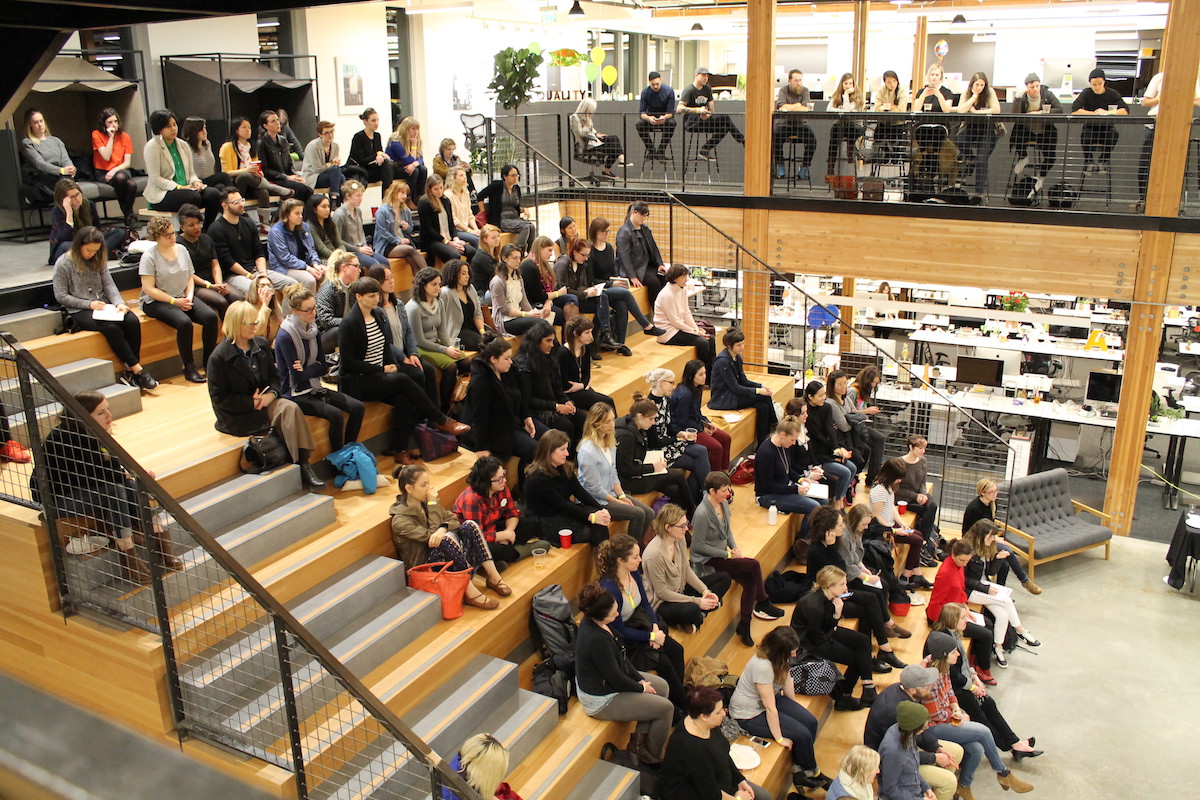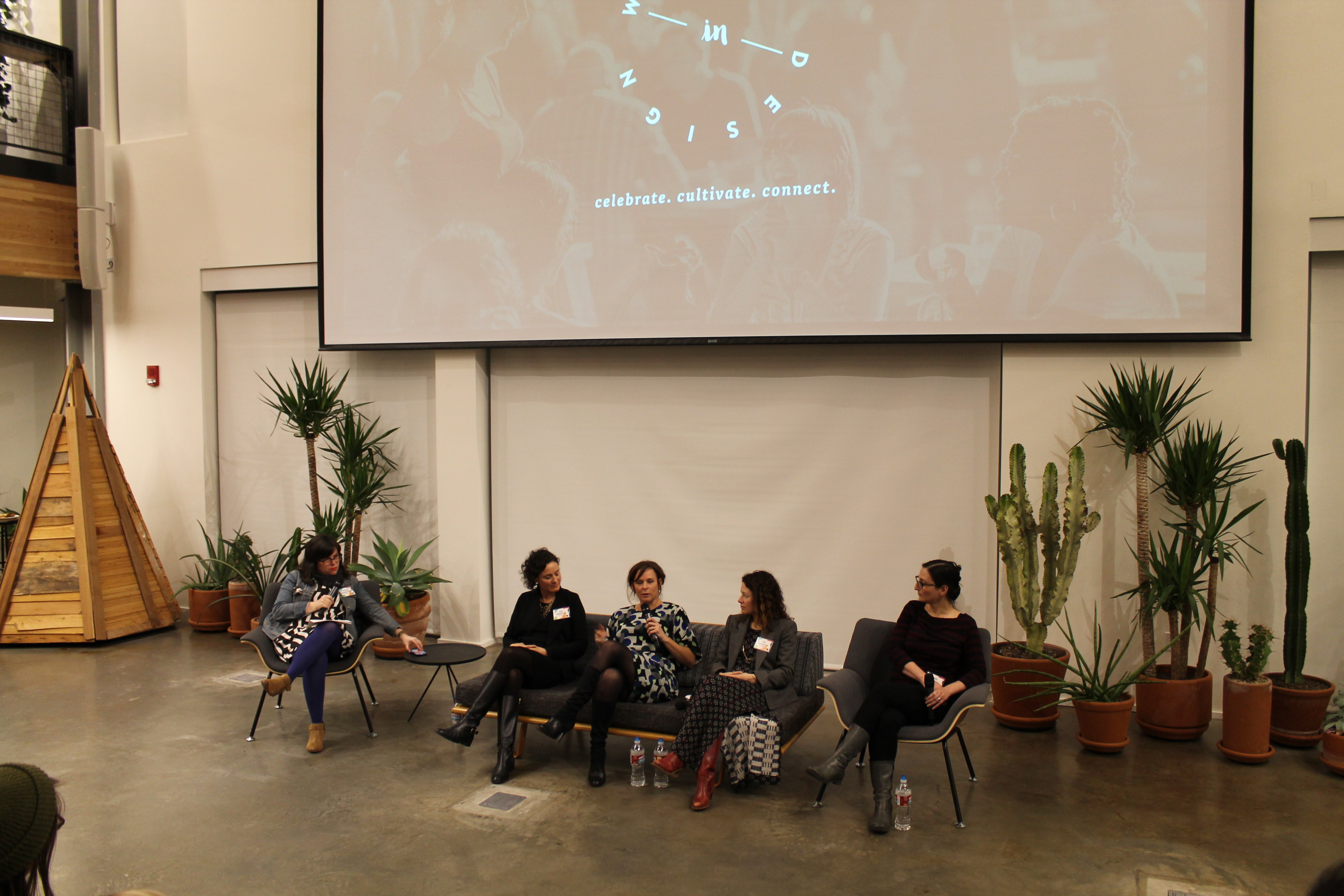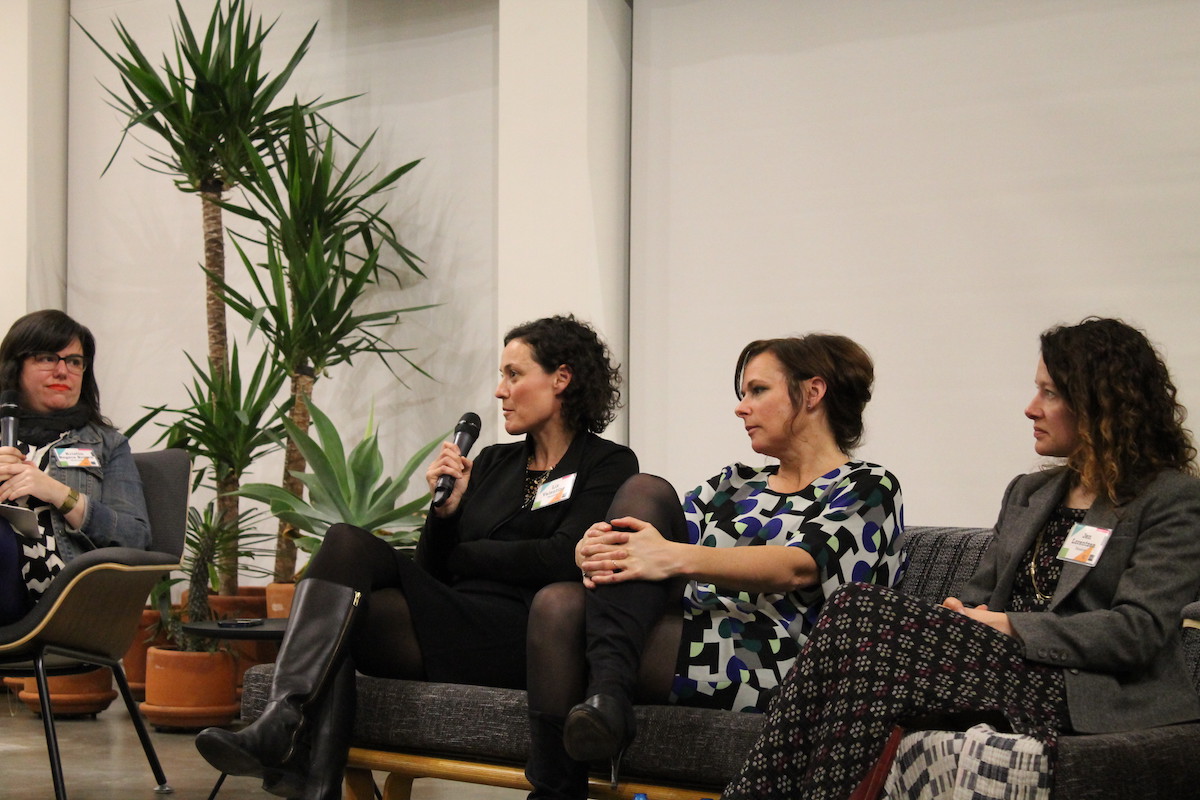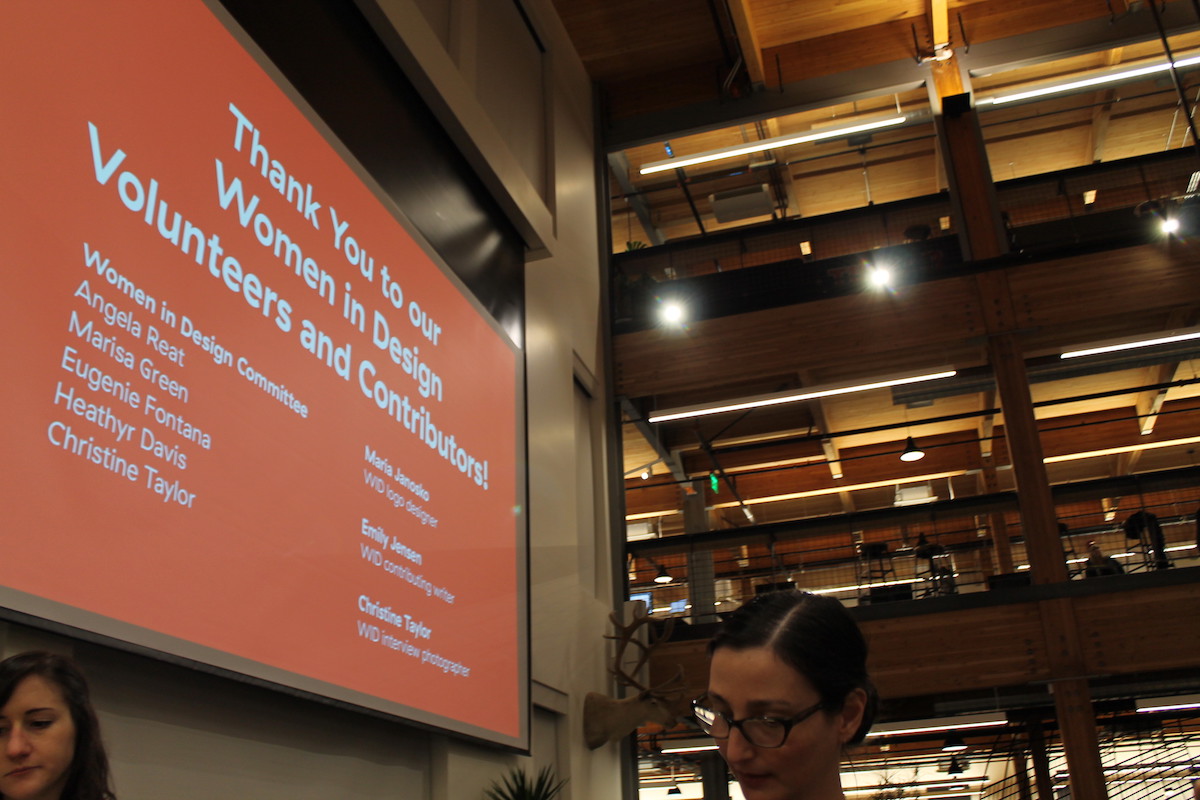In 2016, AIGA Portland hosted its second Women in Design event (now known as Women Lead) with Women in Design | A Discussion with Women Who Lead. The evening included an incredible panel discussion and passionate discussions over pizza and beer – all within the beautiful space at Instrument.
Panel Members
Paraphrased Highlights
How do you get unstuck?
Tsili Pines: You start getting to this plateau where you run the risk of getting burned out or bored, both of which are deeply threatening for a creative person. That’s why I started Design Week Portland – I needed an excuse to meet creative people doing creative things.
Liz Valentine: It’s easy to think you need to look within the creative community. For me, a lot of times, it’s about getting outside the industry. It’s really interesting to delve into the situations those outside our industries encounter. It can be really eye-opening to take yourself out of the agency world.
Keri Elmsly: I reach out to the edges of my community, experimenters and hackers and architects and people who work in festivals or people in bands, when I get stuck with what I’m doing. I have to pull my head out of my project, look at what my everyone else is doing, get really jealous, think about how they’re suffering, and then reframe it. But there is a kind of shared knowledge in that community where you can go and talk about something you’re stuck on, and they’ll be using some technology you haven’t even thought of, or they’ll be doing some super academic paper.
How have you changed as you have become a leader?
Jen Lorentzen: It isn’t that I changed who I was – I changed where I worked. I advocate to own who you are so that you find the right place for yourself instead of trying to make it work at a place where you’re swimming against the current.
Tsili Pines: Each person that comes into the studio changes the studio. There’s something nice about that because it helps you not stagnate, you give new people the space to morph the thing they come into.
If any of you have seen injustices related to gender or something else, how have you gone about pointing them out? Is there any advice you can give to people who might be nervous about doing that?
Keri Elmsly: I have been massively insulted by clients many times. I remembered thinking at the time that I could speak up, but also thought about the team and their dependence on me to keep the client. You can’t control every situation, you can’t control or change them, but you can control your own reaction. I’m not saying to absorb terrible things that happen to you, but the choices you make in the moment can define how you navigate a crisis. When you have a studio of a certain size, with a great product, you can choose the clients you work with and choose to work with not horrible people. That’s a great position to be in.
How do you see yourself in Portland’s changing environment?
Tsili Pines: Design Week Portland catalyzes a lot of interesting things and allows us to have conversations with the design community worldwide. Some things that come up focus on what Portland will be in the future, with the question of what is constructive and what is harmful for this community.
Jen Lorentzen: There is so much sharing in Portland. That’s the vibe I’m looking for. We support each other in a way that is really unique to this city, with a lot of overlap as people move between companies here. Portland is set up that way, and as long as people here try to keep that energy, hopefully it’ll stay friendly and sharing.
Keri Elmsly: Portland’s not the right fit for everyone, but that’s why people come here. Even though there’s fear with gentrification, but the people I know here make an effort to not be an asshole and to give back. I see that manifested in the studio culture.
How does jealousy impact your work?
Kristin Rogers Brown: I went to high school with all these super brilliant people, and the deepest frustration is to be constantly overwhelmed with their achievements. But for me it’s deeply motivating to deconstruct the jealousy and try to understand where that thing is coming from and how to redirect it into something actual for yourself as a goal. I think that, for me, it’s one of the ways I can stay motivated and unstuck – to zig and zag.
How do you encourage diversity, particularly for people of color?
Tsili Pines: With Creative Mornings, after the first year I looked back and I found that the speakers were overwhelmingly white men. I had to make a conscious effort to change that. But white men are often the easiest to get to speak, so especially for volunteer efforts where resources are limited, you have to make a conscious effort to step outside the easy circles and communities.
What do I do if my organization is 80% men and I feel myself shifting towards this “boys’ club” culture? Is that something to fight against, or embrace?
Kristin Rogers Brown: Just because it feels that way, it doesn’t mean that you’re not also influencing culture. If you’re feeling uncomfortable about it, it’s probably because you’re changing things. When it’s not right, you’ll know it, and then you can work to getting out.
Event Photos





Event Sponsors
Thank you to our sponsors who made this Women in Design event possible.

